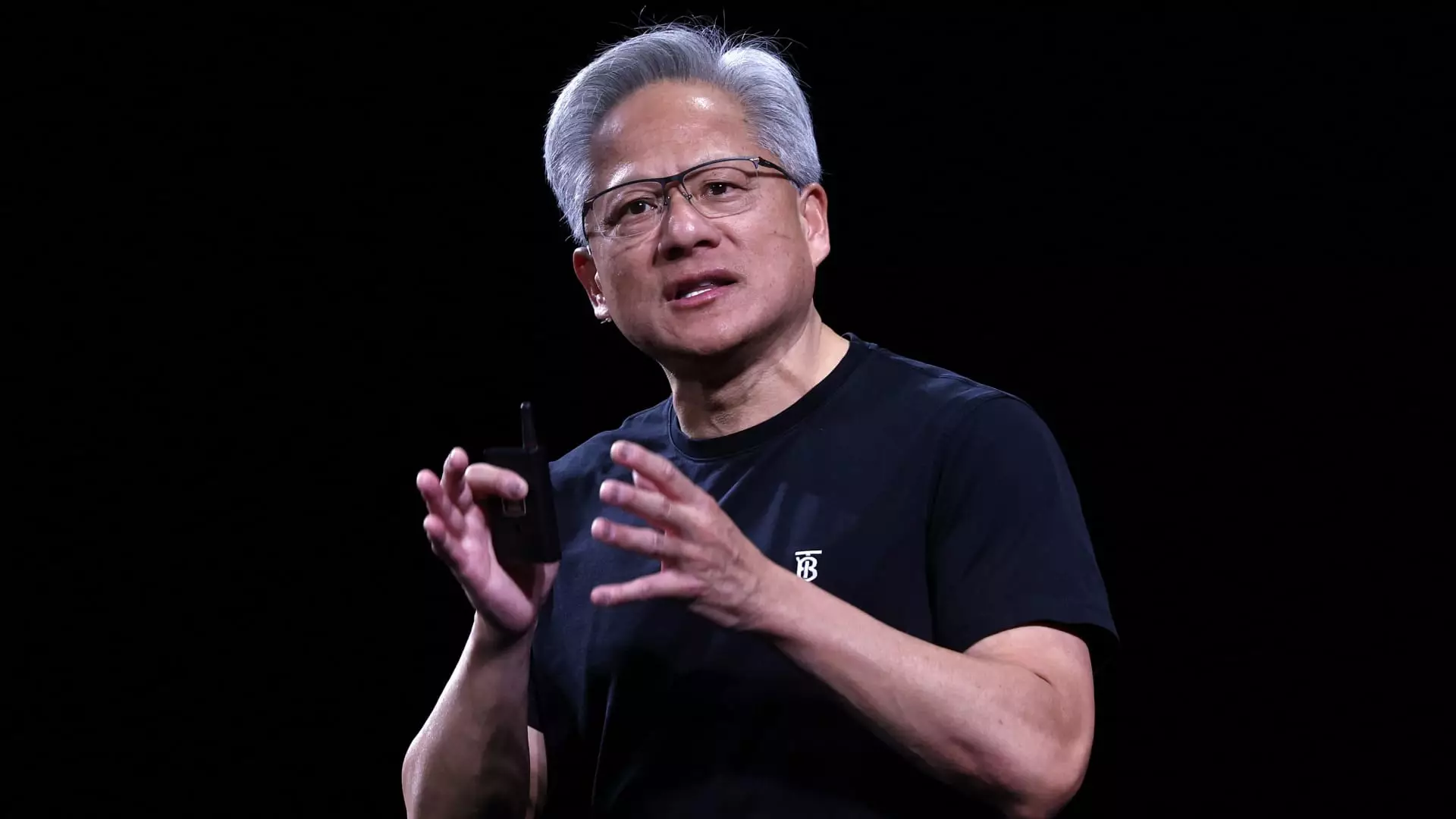This week, Jensen Huang, the CEO of Nvidia, embarked on a whirlwind tour across Europe, drawing substantial attention to his company’s potential role in shaping the future of artificial intelligence (AI) within the region. With a magnetic presence that has captivated audiences from London to Paris, Huang’s charismatic appeal is reminiscent of a rock star. Yet beyond the spectacle, his message reverberates with a profound purpose: Nvidia isn’t just a semiconductor manufacturer; it’s positioning itself as the architect of an AI-driven future, critical for Europe’s self-determination.
During his appearances—including a keynote at the GTC event in Paris—Huang delivered a clarion call for Europe to embrace AI as a cornerstone of its infrastructure, akin to electricity in its transformative potential. This powerful analogy encapsulates his vision: AI is not merely a technological advancement; it is the bedrock of modern society. Nonetheless, it’s clear that while Huang’s messaging is compelling, the underlying narrative poses vital questions about national sovereignty, technological dependency, and the dynamics of global competition.
The Allure of ‘Sovereign AI’
Central to Huang’s discourse is the concept of “sovereign AI,” which emphasizes the need for nations to erect their own data centers and infrastructure to better serve their populations, rather than outsourcing these critical functions to foreign entities. This idea resonates deeply among European policymakers, especially against the backdrop of increasing geopolitical tensions and fears of reliance on overseas servers. By promoting this idea, Huang cleverly positions Nvidia not only as a technical partner but also as a steward of national interests—a move that could bolster his company’s footprint in a market increasingly wary of external dependencies.
By asserting that Europe must collaborate to build a unified AI ecosystem, Huang paints Nvidia as the key facilitator of this transformation. However, his approach also brings to light an uncomfortable truth: the urgency to innovate is often coupled with a pressure to consolidate power within the hands of a few industry players. Can this path to AI independence effectively mitigate the risks associated with global supply chains, or does it invite an oligarchic control of AI infrastructure?
Strategic Concerns: The China Factor
Huang’s European tour was not just a one-sided affair; it was an exercise in geopolitical positioning. One focal point of his discussions was China and its burgeoning AI capabilities. Given the recent U.S. restrictions on the export of advanced chips, Huang’s observations about competitors like Huawei highlight a critical pivot. While he confidently asserts that Huawei is lagging behind Nvidia in technology, it is critical to note that sheer volume and energy investments in China can alter the competitive landscape dramatically. By sidelining American tech firms, there’s a looming possibility that more nations could gravitate towards Chinese technology. This complicates the West’s collective strategy for maintaining a leadership position in AI.
Huang’s insights bring to the forefront a crucial vulnerability in the Western tech ecosystem: the fragility of innovation amid stringent regulations and export controls. If American companies struggle to compete within the Chinese market, they risk ceding influence and inviting a new paradigm where AI power shifts towards countries embracing alternative tech powerhouses. The stakes involve not just market share but also global standards and norms that govern AI technology.
The AI Road Ahead: Vision and Caution
As Huang enthusiastically outlines his predictions for the coming decade—a time he boldly heralds as the era of robotics and autonomous vehicles—there’s palpable optimism about the transformative potential of AI. His confidence in innovations like quantum computing captures the imagination, suggesting breakthroughs that could redefine fields ranging from healthcare to materials science. Yet this optimism must be approached with caution.
Were these groundbreaking advancements to be monopolized by a select few, we could witness widening societal divides. The challenge rests not only in innovating but ensuring equitable access to these technologies—a topic often glossed over in industry celebrations. Huang’s vision for AI should include discussions about how to harness these advancements for public good, rather than merely as instruments of profit.
In this regard, NVidia’s role extends beyond just technological leadership; it filters into ethical considerations surrounding AI, data privacy, and societal impacts. As Huang steps into the limelight in Europe, he has an opportunity—and perhaps a responsibility—to steer the discourse towards a balanced approach that champions both innovation and inclusivity.
The narrative unfolding around Nvidia and its visionary leader serves as a critical reminder: the pathway to supremacy in AI is not just built on technological prowess but on a deliberate commitment to shaping a future that benefits the collective, innovative spirit of society at large.


Leave a Reply